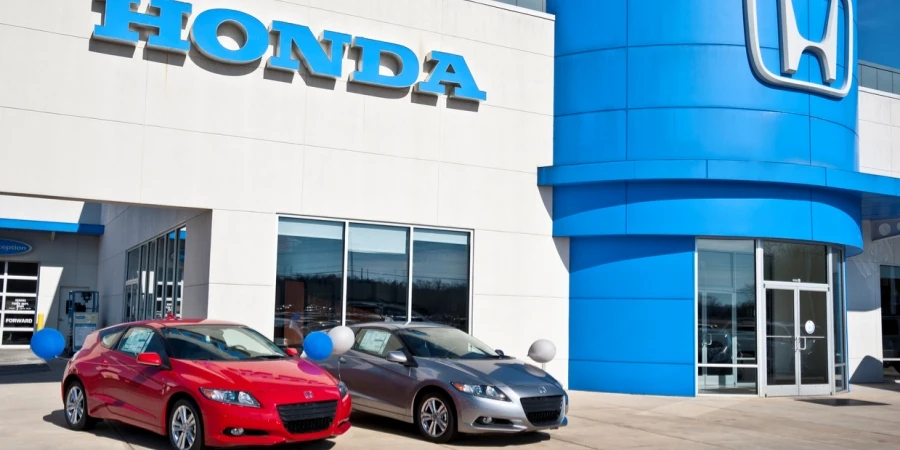INDYCAR is following on the heels of the Honda Civic, Accord and CR-V, and going hybrid. The introduction of the new Energy Recovery System, or ERS—a collaborative effort between Honda Racing Corporation USA and other suppliers—at the Honda Indy 200 at Mid-Ohio presented by the 2025 Civic Hybrid ushers in a new era of NTT INDYCAR SERIES electrified hybrid racing.
The new INDYCAR ERS hybrid will be combined with the existing 2.2-liter, twin-turbocharged V-6 engine and produce up to an additional 60 horsepower. The hybrid unit will be located within the bell housing area of the car, between the engine and transmission, allowing it to fit within the existing chassis and engine footprint.
The ERS system will be made up of four major components:
- The Energy Storage System – ESS. Produced by Honda Racing Corporation USA, the ESS is a series of 20 supercapacitors—designed by Skeleton—that store the energy harvested by the MGU until its deployment by the drivers. HRC US opted to use a supercapacitor rather than a battery because of its ability to both capture and deploy energy faster. The ESS can fully charge and deploy in approximately 4.5 seconds.
- The Motor Generator Unit – MGU Model Name: EMPEL 180. Produced by EMPEL in collaboration with Ilmor, the Motor Generator Unit (MGU) captures spent energy produced under braking, turning it into electricity to be stored by the Energy Storage System. The MGU is also linked to the driveshaft of the existing Indy car engine—allowing the driver to deploy the harvested energy as additional power.
- DC / DC converter. Produced by BrightLoop Converters, the DC / DC converter on the IndyCar ERS ensures that the energy from the ESS or generated by the MGU is output at the correct voltage for the existing powertrain, 12 volts.
- Voltage Control Device. Essentially an oversized fuse, the Voltage Control Device is a safety component that ensures the entirety of the system never exceeds 60 volts.
These components will interface with the existing McLaren Applied-provided TAG-400i ECU or Engine Control Unit. Additional software will be used to ensure the correct synchronicity between the ERS and the Honda—or any other manufacturer—provided engines.
The ERS captures what would otherwise be wasted energy generated under braking and uses it to charge up the supercapacitors within the unit. The regen process can be moderated by technology or controlled manually by the driver. When deployed, the ESS sends the energy to the MGU, which is linked to the driveshaft of the existing Indy car engine, adding up to 60 horsepower at the drivers’ disposal.
In the automatic regen’ process, software dictates a set level of regeneration that will occur as the driver is racing. In the manual regen process, drivers have more control over the degree of energy harvesting. A button on the steering wheel activates energy harvesting at a set rate, while pulling a paddle on the rear of the steering wheel changes the amount of regeneration.
The process is the same for oval racing in the NTT INDYCAR SERIES. Despite not often lifting or braking on ovals in qualifying situations, it is common to lift on the ovals when drafting or lining up to execute a pass in race-day scenarios. Therefore, regen will occur often during a race as drivers are setting up their passes. Then, energy can be deployed when they are making the pass.
Deployment of the energy stored in the ERS is activated manually by the driver via a button on the steering wheel.
An additional benefit to going hybrid is the ability for the ERS to start or restart the car without the need for the current external starter. With stalling being a common cause for full-course cautions, the ERS will provide enough power that a driver can restart the car without outside assistance. This will not only reduce the number of yellow and red flag periods, but also the risk safety workers face while attending to a stalled race car on course. The system will always keep some energy in reserve to allow for multiple engine restarts should a driver need it.
ERS Stats
- With additional weight-saving measures within the car, the ERS system adds 42.5 kilograms of weight.
- The ERS system can be charged from a 12 volt source. It can be charged in the shop or on pit lane easily. It can also be charged by the engine itself under idle.
- The ERS in its current form generates approximately 60 additional horsepower, but there is room for upward development if needed.
- The ERS generates 45 N·m of torque.
- Much like the current Indy car engine, the MGU operates at a maximum of 12,000 RPM.
- The amount of energy stored per lap varies by track length and type.
- The ESS has a maximum operating voltage of 60 Volts and 2,000 Amps.
- The ESS can be fully charged or discharged by the driver in approximately 4.5 seconds.
- The driver has control of the State of Charge or SOC of the ERS, between 60 Volts and 30 Volts. Even if the driver empties the ESS of charge, 30 Volts will remain in order to restart the car in case of an off or stall.
The first race with the new Energy Recovery System in place will be the Honda Indy 200 at Mid-Ohio presented by the 2025 Civic Hybrid, 7 July.
Source from Green Car Congress
Disclaimer: The information set forth above is provided by greencarcongress.com independently of Alibaba.com. Alibaba.com makes no representation and warranties as to the quality and reliability of the seller and products.




